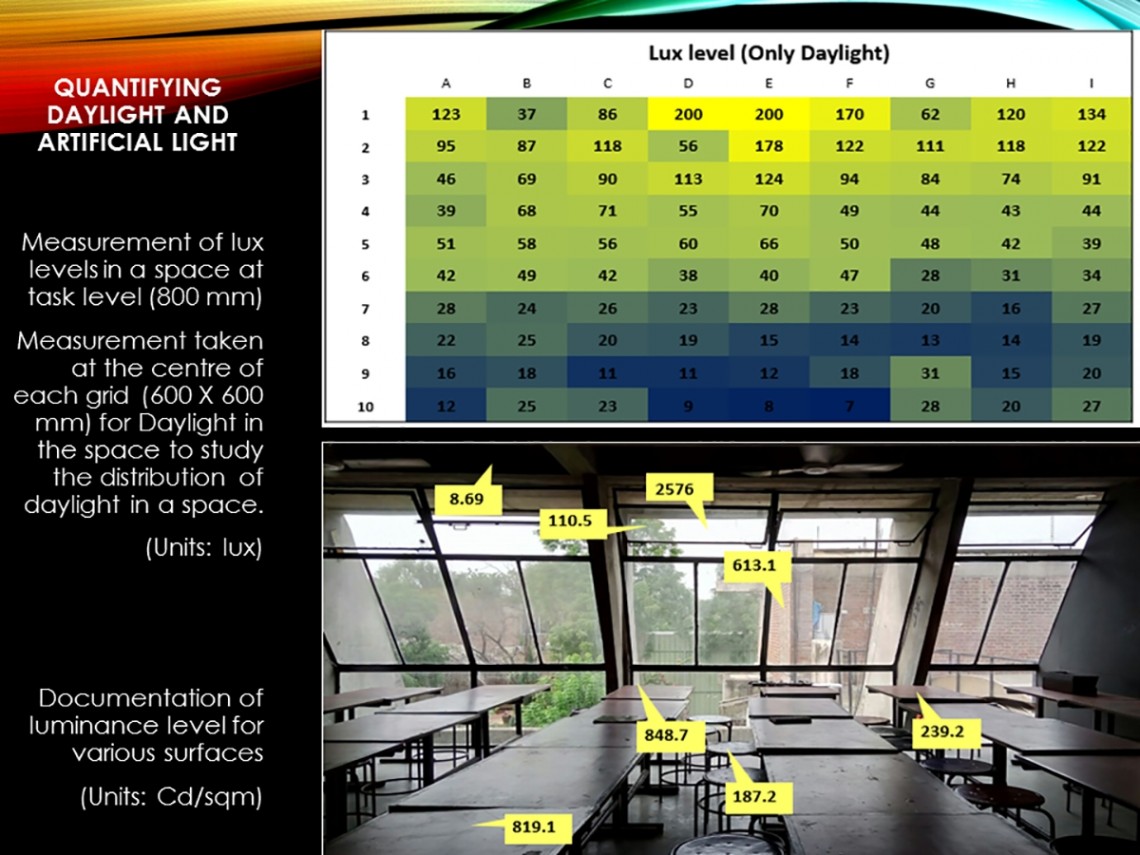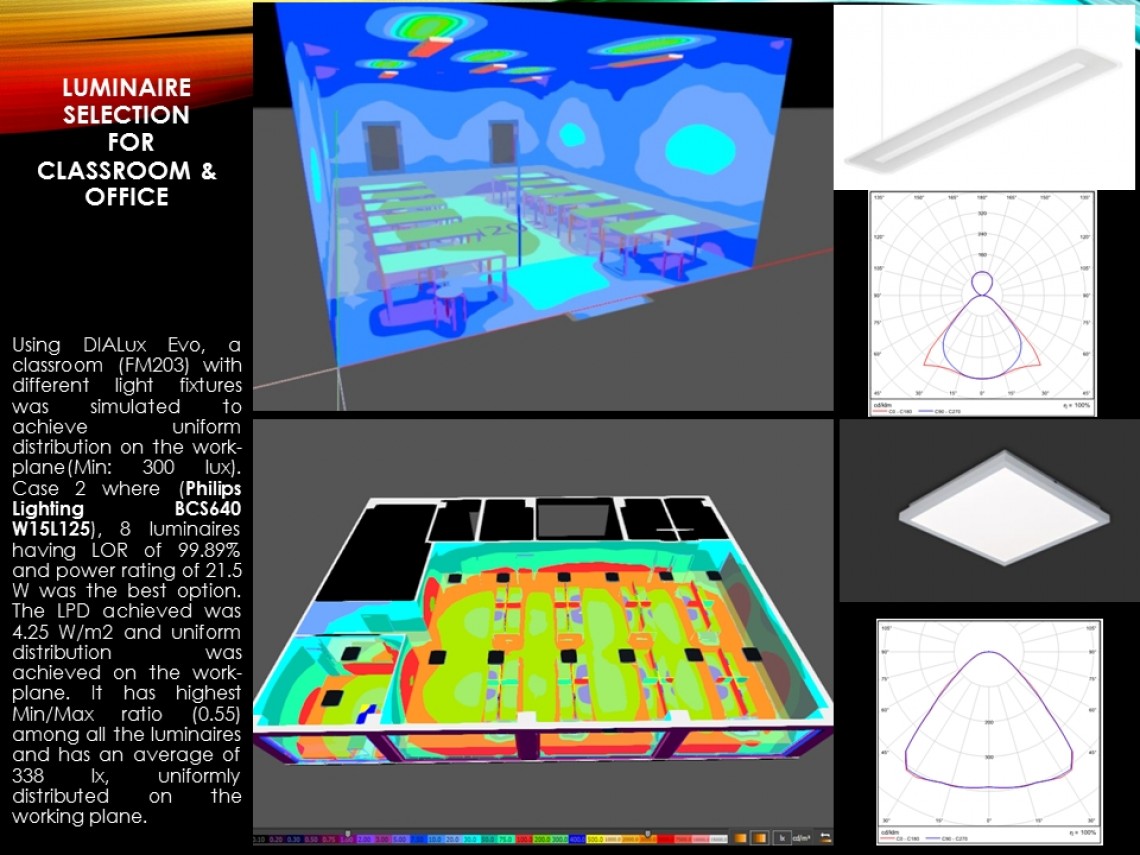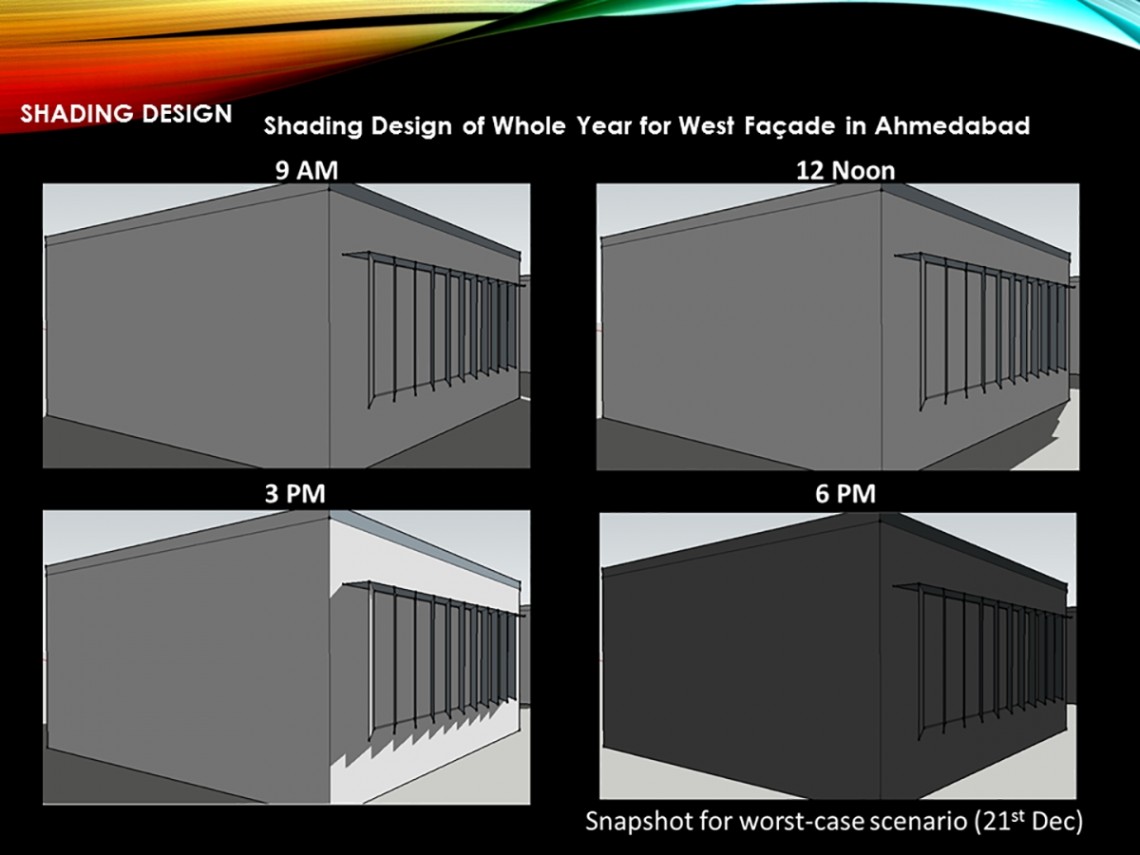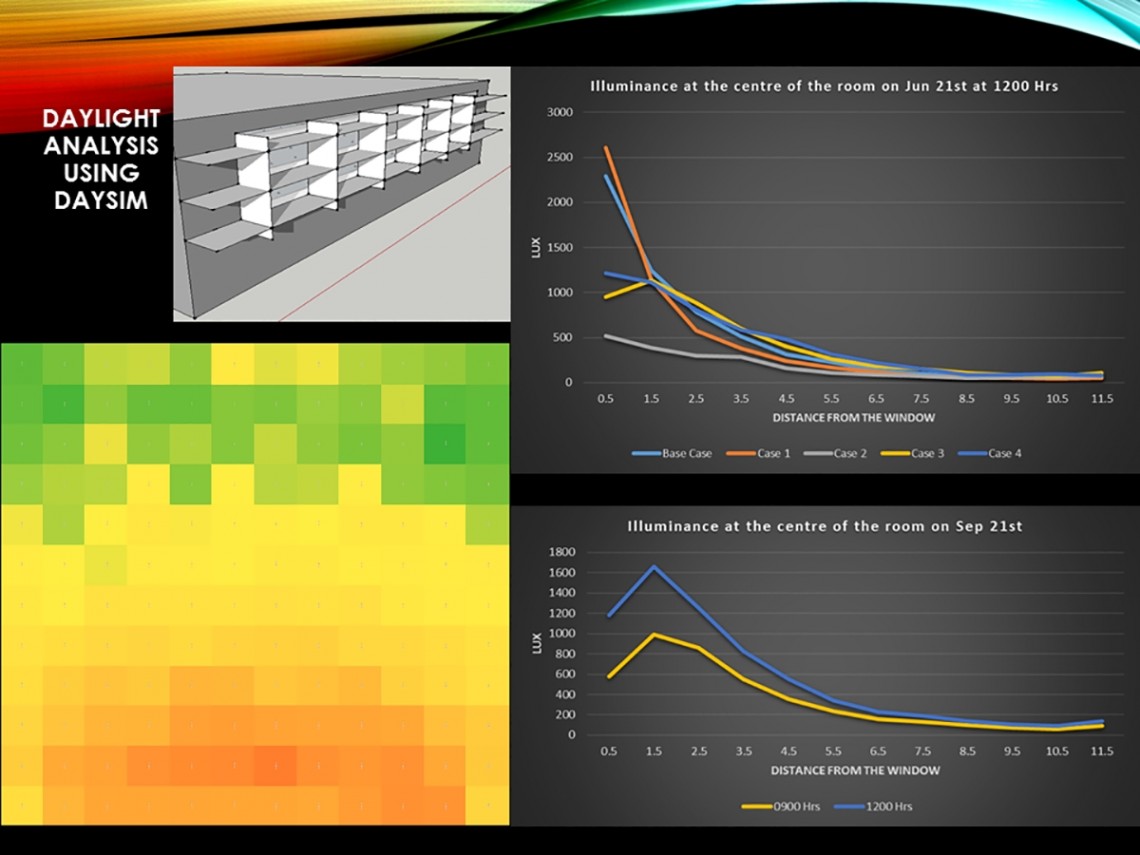Your browser is out-of-date!
For a richer surfing experience on our website, please update your browser. Update my browser now!
For a richer surfing experience on our website, please update your browser. Update my browser now!
The studio offered the learning for various aspects of Artificial Lighting and Daylight in a space. Various luminaries and their properties were studied to understand their behaviour for distributing light. Simulations were performed to design a optimum lighting design to achieve required lux level in a space. Hands on measurement helped to understand the characteristic of daylight in a space. Sunpath analysis helped to derive a shading design for various time of the year and for different places. Simulations (using DaySIM and Radiance) was used to analyse daylight distribution into a space.








